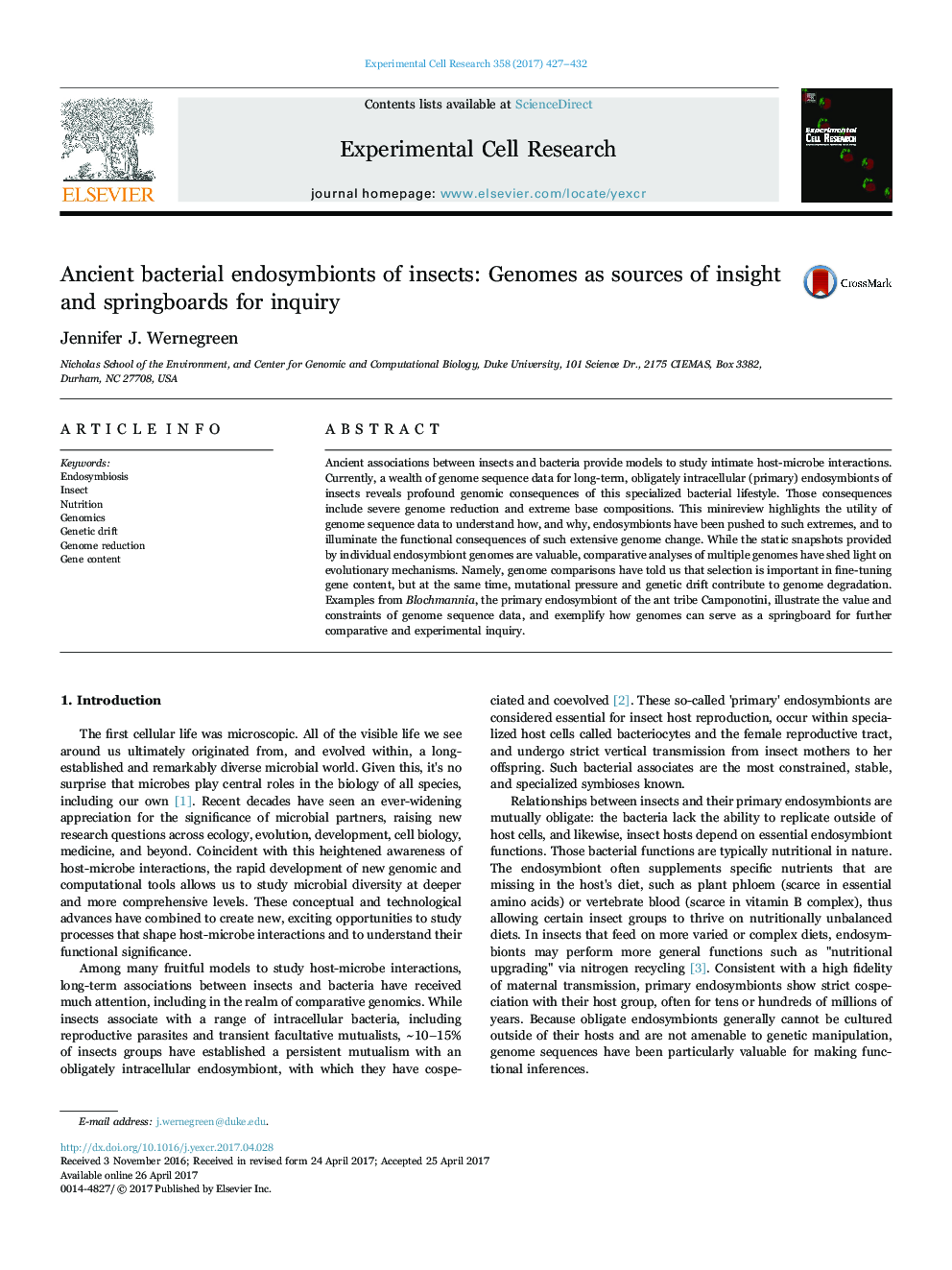| Article ID | Journal | Published Year | Pages | File Type |
|---|---|---|---|---|
| 5527181 | Experimental Cell Research | 2017 | 6 Pages |
â¢Genomes of bacterial endosymbionts show severe reduction and base compositional bias.â¢Comparative genomics sheds light on evolutionary mechanisms shaping these features.â¢Mutational pressure and genetic drift contribute to genome degradation.
Ancient associations between insects and bacteria provide models to study intimate host-microbe interactions. Currently, a wealth of genome sequence data for long-term, obligately intracellular (primary) endosymbionts of insects reveals profound genomic consequences of this specialized bacterial lifestyle. Those consequences include severe genome reduction and extreme base compositions. This minireview highlights the utility of genome sequence data to understand how, and why, endosymbionts have been pushed to such extremes, and to illuminate the functional consequences of such extensive genome change. While the static snapshots provided by individual endosymbiont genomes are valuable, comparative analyses of multiple genomes have shed light on evolutionary mechanisms. Namely, genome comparisons have told us that selection is important in fine-tuning gene content, but at the same time, mutational pressure and genetic drift contribute to genome degradation. Examples from Blochmannia, the primary endosymbiont of the ant tribe Camponotini, illustrate the value and constraints of genome sequence data, and exemplify how genomes can serve as a springboard for further comparative and experimental inquiry.
